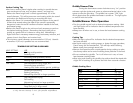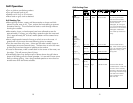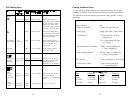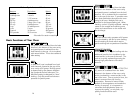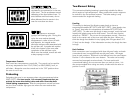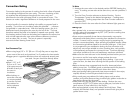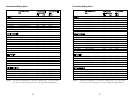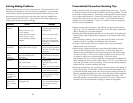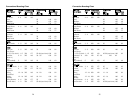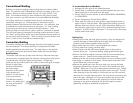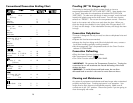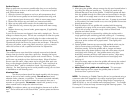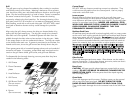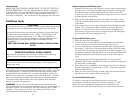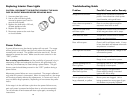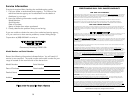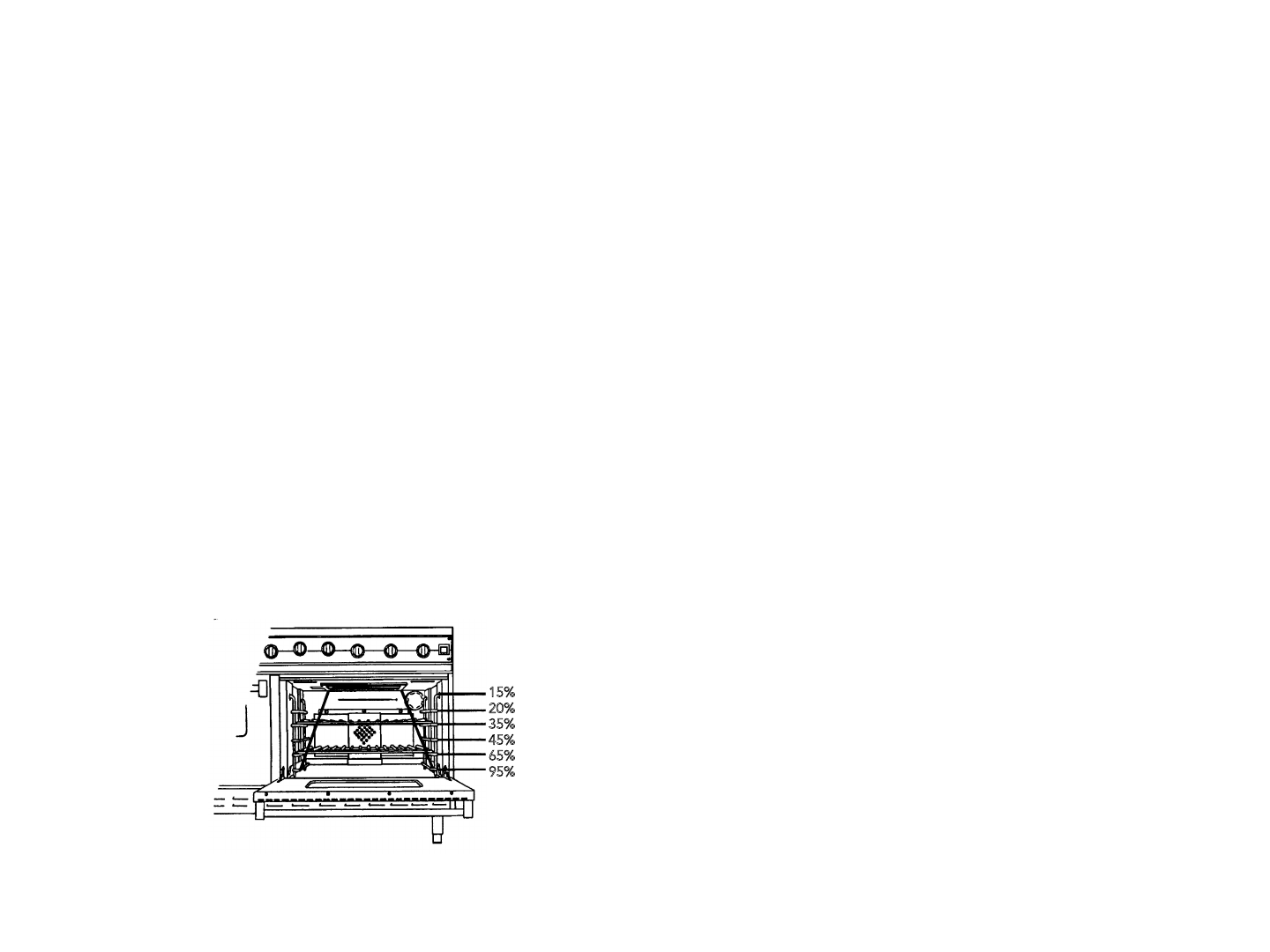
27
To use the Maxi-Broil or Mini-Broil:
1. Arrange the oven racks in the desired position.
2. Center food on cold broiler pan and grid supplied with your oven.
Place broiler pan in oven and close the door.
3. Set the Oven Function selector to either MAXI-BROIL, MINI-BROIL,
or CONV BROIL.
4. Set the Temperature Control dial to BROIL.
5. Either open the door to an open position approximately seven to
eight inches or close the door. With open-door broiling, the broil
element does not cycle on and off. With closed-door broiling, the
broil element might cycle on and off if an extended broiling time is
required. A built-in smoke “eliminator” in the top of the oven helps
reduce smoke and odors.
Broiling Tips
•Always use a broiler pan and grid for broiling. They are designed to
provide drainage of excess liquid and fat away from the cooking
surface to help prevent spatter, smoke and fire.
•Place broiler pan with food in recommended rack position.
•To keep meat from curling, slit fatty edge.
•Brush chicken and fish with butter several times as they broil to
prevent drying out. To prevent sticking, lightly grease broiler grid.
•Broil on first side for slightly more than half the recommended time,
season and turn. Season second side just before removing.
•Always pull rack out to stop position before turning or removing food.
•Use tongs or a spatula to turn meats. Never pierce meat with a fork
as this allows the juices to escape.
•Remove the broiler pan from the oven when you remove the food.
Drippings will bake onto the pan if it is left in the heated oven after
broiling. While pan is hot, place damp paper towel over grid. Drizzle
with liquid dishwashing detergent and pour water over grid. This will
make cleaning of the pan easier, or the broiler pan can be lined with
aluminum foil to make cleaning easier. Be sure the foil extends up the
side of the pan. Although it is not recommended, the grid can also
be covered with foil. Be sure to slit openings to conform with the
openings in the grid so melted fat can drain through to prevent
spattering, smoking or possibility of grease fire.
26
Conventional Broiling
Broiling is a dry-heat cooking method using direct or indirect radiant
heat. It is used for small individualized cuts such as steaks, chops, and
patties. Broiling is most successful for cuts 1-2 inches (2.54-5.1 cm)
thick. Conventional broiling is more suitable for flat pieces of meat.
Your oven contains a top broil element to provide additional flexibility
for broiling foods such as stuffed lobster and for top-browning
casseroles, meringue, etc. Broiling speed is determined by the
distance between the food and the broil element. On maxi-broil, heat
is radiated from both broil elements at full power. For “fast” broiling,
food may be as close as two inches to the broil element. “Fast”
broiling is best for meats where “rare to medium” doneness is desired.
The mini-broil setting is designed for broiling smaller amounts of food.
For “slow” broiling, allow about four inches between the top surface of
the food and the broil element. “Slow” broiling is best for chicken and
ham, in order to broil food without overbrowning it.
Convection Broiling
Convection broiling has the advantage of broiling food slightly quicker
than conventional. Convection broiling of meats produces better
results especially for extra thick cuts. The meat sears on the outside
and retains more juices and natural flavor inside with less shrinkage.
Rack Positions:
The broiler uses heat rays to help cook the food. Because these rays
can travel only in straight lines, the effective cooking area of the broiler
is reduced when using the higher rack positions. At high rack
positions, the rays cannot reach all corners of the broiler grid, so larger
pieces of meat might
not broil sufficiently at
the outer edges.
Position 6 is the closest
to the broiler and
position 1 is the closest
to the oven bottom.
The effective cooking
areas on the broiler grid
for each rack position
are as follows:
15%
20%
35%
45%
65%
95%



